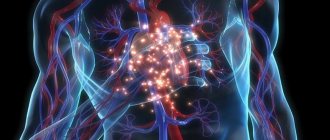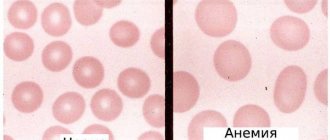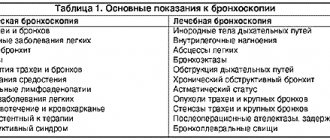- Causes of pulmonary edema
- What diseases are there a risk of edema?
- Types of pathology
- Symptoms of pulmonary edema
- Diagnostics
- Treatment of pulmonary edema
- Predictions and prevention
Pulmonary edema is a condition in which gas exchange is disrupted and respiratory failure develops. Swelling occurs due to an imbalance of pressure in the pulmonary capillaries and the release of a large amount of edematous fluid into the lung tissue without its reabsorption.
Causes of pulmonary edema
A mixture of edematous fluid (transudate) and a liquid substance that “lines” the alveoli of the lungs from the inside (it is called “pulmonary surfactant”) enters the lumen of the alveoli, where it combines with air. This leads to the formation of foam, which creates an obstacle to the flow of oxygen. Lack of oxygen provokes the development of shortness of breath, due to which the pressure inside the chest decreases and blood flow to the right side of the heart increases.
Pulmonary edema causes infiltration of the alveoli and is manifested by symptoms that indicate oxygen starvation, which is dangerous for tissues. The patient requires emergency care due to the high risk of death due to suffocation.
What diseases are there a risk of edema?
Pathology indicates a complication of the underlying disease, increases its duration and worsens the prognosis of treatment. The most dangerous from the point of view of pulmonary edema include:
- Heart diseases. Respiratory failure often occurs against the background of pathologies of the heart and blood vessels. Cardiogenic pulmonary edema is a life-threatening complication that develops with myocardial infarction, aneurysm, endocarditis and myocarditis, severe hypertension, and pathological conditions caused by congenital or acquired heart defects.
- Pulmonary diseases. At risk are patients with injuries and severe diseases of the respiratory tract. Respiratory edema develops against the background of exacerbation of chronic bronchitis and bronchial asthma, tuberculosis, and lobar pneumonia. The risk is increased by tumor lesions of the lung tissue, pleurisy, and chest injuries, which are accompanied by pneumothorax. If a person is connected to a ventilator for a long time and receives a mixture with a high concentration of oxygen, this also leads to an imbalance of pressure in the pulmonary capillaries and the release of exudate.
- Infectious diseases. In severe cases or inadequate treatment of whooping cough, scarlet fever, influenza, diphtheria and other infectious diseases, edema develops, followed by acute pulmonary failure. In young children, this clinical syndrome can cause acute laryngitis and the proliferation of adenoids.
- Pathologies of intrauterine development and difficult childbirth. Severe pregnancy, prematurity, oxygen hypoxia, fetal bronchopulmonary dysplasia - these factors increase the risk of developing pulmonary failure in newborns. In pregnant women, pulmonary failure can develop due to eclampsia. The same phenomenon occurs with ovarian hyperstimulation syndrome against the background of stimulation of ovulation by hormonal drugs.
- Foreign bodies entering the respiratory tract. Mechanical asphyxia is one of the possible causes of acute respiratory failure. Pathology occurs when foreign objects enter the respiratory tract, after drowning or attempted hanging, or blockage of the respiratory tract with vomit.
- Diseases of the urinary system and gastrointestinal tract. Nephrogenic pulmonary edema can be complicated by acute inflammatory diseases, which are accompanied by renal dysfunction and the development of severe renal failure. In gastroenterology, patients with liver cirrhosis, severe pancreatitis, and intestinal obstruction have to deal with respiratory failure.
- Neurological diseases. Traumatic brain injuries, meningitis, encephalitis, neoplasms, cerebral hemorrhages, complications after brain surgery - all this leads to neurogenic pulmonary edema.
- Allergies, injuries, poisoning. Acute respiratory failure can be caused by the ingestion of various toxic substances into the body. Pulmonary edema is encountered by patients with alcohol and drug intoxication, poisoning with drugs, salts of heavy metals, and toxic gases. Pulmonary insufficiency is diagnosed in case of blood poisoning, burns with a large affected area, acute allergic reactions.
Prevention
Preventive measures are aimed at eliminating the cause of death from pulmonary edema and boil down to regular drug therapy for heart failure and following a diet aimed at reducing salt and fluid intake. Light physical activity is also recommended. Dispensary observation at the patient’s place of residence is required.
Pulmonary edema is a dangerous pathology that requires prompt medical attention. The success of the treatment measures taken depends on the severity of the edema, its form, as well as the presence of concomitant diseases in the patient, for example, heart disease, hypertension, cardiac, renal and liver failure in the chronic stage.
Types of pathology
Depending on the cause of development, pulmonary edema can be cardiogenic or non-cardiogenic. In the first case, the cause of respiratory failure is cardiovascular disease. The second category includes all other pulmonary edema caused by diseases of the gastrointestinal tract, nervous system, and injuries.
Pulmonary edema is also classified according to the nature of its course. There are four types of pathology development:
- With fulminant development, severe respiratory failure occurs within a few minutes and leaves no chance of survival.
- Acute swelling can take up to four hours to develop. This form is considered less dangerous than the previous one, but in the absence of timely assistance, the risk of death is extremely high. Most often, acute pulmonary edema develops with myocardial infarction, traumatic brain injury, and acute allergic reactions.
- In case of intoxication, renal and liver failure, subacute pulmonary edema may occur. The intensity of symptoms is constantly changing, so continuous medical monitoring of the patient's condition is required.
- Prolonged swelling may take several days to develop. Symptoms are mild compared to the acute and subacute forms. Prolonged pulmonary edema usually occurs against the background of various chronic diseases, including heart failure.
Causes
In fact, there are many causes of pulmonary edema - they are different for different diseases. Let us name, for example, a few general prerequisites:
- cardiosclerosis after a heart attack, acute myocardial infarction;
- hypertension, arrhythmia;
- heart failure;
- congenital or acquired heart defects;
- chronic bronchitis, lobar pneumonia, bronchial asthma;
- complications due to ARVI, measles, influenza, scarlet fever, whooping cough and other diseases;
- prematurity in newborns;
- serious kidney problems;
- traumatic brain injury, brain surgery, etc.;
- inhalation of toxic substances.
These and many other reasons are not direct factors contributing to the development of pulmonary edema. But against the background of such conditions, it can develop, which is necessarily taken into account during hospitalization with all of the above.
Symptoms of pulmonary edema
Before the main symptoms of pulmonary failure appear, patients experience weakness and dizziness, a feeling of tightness in the chest, headache, and dry cough. A few hours after the first symptoms of the pathology, an attack of cardiac asthma develops - the first stage of pulmonary edema. It manifests itself:
- severe lack of air;
- severe dry cough;
- increased heart rate;
- hoarse breathing;
- profuse sweating;
- pale skin, blueness of nails and lips;
- feelings of fear and anxiety.
As a rule, the attack occurs at night or before dawn. In patients with cardiac diseases, cardiac asthma can be caused by physical or emotional stress and hypothermia.
As edema develops, the alveoli become involved in the pathological process. This leads to increased suffocation. The patient experiences severe shortness of breath, the face becomes burgundy-blue and puffy, the veins in the neck swell, and mental retardation appears. Breathing becomes hoarse, foam mixed with blood comes out of the mouth.
In the absence of medical care, the patient loses consciousness and falls into a coma. In this state, blood pressure decreases critically, breathing becomes shallow, and the pulse weakens. The cause of human death is asphyxia, in which the body experiences an acute lack of oxygen with an excess of carbon dioxide.
Diagnostics
A doctor can determine the development of pulmonary edema by numerous external symptoms. In addition, the patient is prescribed instrumental and laboratory examinations. Among them:
- measurement of blood oxygen levels, determination of carbon dioxide content;
- blood chemistry;
- electrocardiogram and ultrasound of the heart;
- chest x-ray to evaluate the condition of the lungs.
Inserting a catheter into the pulmonary artery allows you to determine the type of edema: cardiogenic or non-cardiogenic.
If pulmonary edema is suspected, it is important to carry out the necessary tests and examinations as soon as possible, identify the cause and type of pathology, and begin treatment. Saving the patient's life directly depends on this.
How to prevent death?
To do this, it is necessary to recognize swelling in a timely manner. The difficulty of diagnosis also lies in the fact that pathological processes develop when the patient is sleeping. Symptoms that indicate the onset of pulmonary edema as a cause of death:
- dyspnea;
- fingertips and lips acquire a blue tint;
- rapid breathing;
- cough of increasing strength;
- attacks of suffocation;
- the appearance of pain behind the sternum;
- weak and rapid pulse.
The doctor listens for whistling, dry rales. The pressure can either drop sharply or rise sharply. The first is more dangerous.
Unfortunately, death from pulmonary edema can occur even after all necessary medical interventions and manipulations have been performed. It is important to remember that emergency care provided to a patient is a mandatory stage of therapy, which increases the chances of survival and makes it possible to exclude pulmonary edema as a cause of death.
Treatment of pulmonary edema
People with acute respiratory failure are treated in the intensive care unit. First aid consists of measures that reduce venous return to the heart. To do this, the patient must take a semi-sitting position. Applying tourniquets to the limbs and hot foot baths have a positive effect.
It is imperative to monitor blood oxygen saturation levels. Oxygen therapy is used to compensate for its deficiency. If pulmonary edema has developed against the background of mechanical asphyxia, it is necessary to clear the airways of foreign objects. If it is impossible to breathe independently, the patient is connected to a ventilator.
A combination of medications is used to eliminate pulmonary edema. Among them:
- morphine and other narcotic analgesics;
- drugs to stimulate diuresis;
- nitroglycerine;
- drugs to lower blood pressure.
Depending on the underlying disease, patients with pulmonary edema are prescribed antihistamines, antibiotics, hormonal and antiarrhythmic drugs, and cardiac glycosides. The task of the resuscitator is to stop the attack and prevent acute hypoxia, which leads to cell death and death of the patient. After the symptoms of respiratory failure are relieved, treatment of the disease that caused it begins.
It is very important to eliminate the root cause that led to the clinical syndrome. Otherwise, a relapse of the disease is possible.
Pulmonary edema in the elderly
Biyarslanova Raisa Mavladinovna Therapist,
More about the doctor
Pulmonary edema is a life-threatening condition. Acute pulmonary edema without treatment is fatal in 100% of cases. Edema may be caused by impaired capillary permeability or increased intracapillary pressure. In this case, the fluid accumulating in the interstitium cannot be removed through the lymphatic vessels. In elderly and senile people, the clinical picture may be blurry, without characteristic signs, which leads to loss of time and aggravation of the situation. Elderly people at risk, as well as their family members, should be informed about the symptoms and first aid for a person with pulmonary edema.
Reasons for the development of pulmonary edema
If fluid accumulation is caused by increased capillary permeability, membranogenic pulmonary edema . It can be caused by:
- blood poisoning, severe chest injuries;
- pneumonia, high concentration of bacterial toxins;
- pancreatitis;
- entry into the bronchi and lungs of water and vomit;
- inhalation of smoke, toxic vapors of chlorine, mercury, phosgene.
Hydrostatic pulmonary edema is more common in older people . It can be called:
- chronic diseases of the cardiovascular system, especially heart failure ;
- impaired venous circulation in the lungs;
- pulmonary embolism, most often we are talking about thromboembolism;
- airway obstruction, for example, with bronchial asthma;
- blockage of lymphatic vessels.
The accumulation of fluid in the lungs leads to disruption of gas exchange. The patient tries to compensate for the resulting hypoxia by more frequent and shallow breathing. Shortness of breath develops . With a subsequent increase in fluid volume, the lungs become less elastic, the alveoli are filled with liquid content and cannot participate in the exchange of carbon dioxide and oxygen.
Types of pulmonary edema by speed of development
There are 4 types depending on the increase in symptoms:
- lightning fast – develops in minutes and ends in the death of the patient;
- acute – development time is 1-4 hours, requires emergency medical care, often leads to death;
- subacute – characteristic of intoxication, symptoms increase and decrease in waves;
- protracted – characterized by a prolonged increase in symptoms, which can develop from 12 hours or longer. Most often associated with cardiovascular diseases. The clinical picture is not clear until the last minute; patients often consult a doctor at the stage of bubbling breathing and acute hypoxia.
Regardless of the rate of increase in symptoms, pulmonary edema is a pathological condition that will not go away on its own. Signs of fluid accumulation in the respiratory system become more and more obvious every hour; ignoring the increasing shortness of breath against the background of a dry and then wet cough leads to a sharp deterioration in the patient’s condition.
Symptoms of pulmonary edema
The most typical clinical picture is observed with cardiogenic pulmonary edema . This is what is typical for most elderly patients. This condition is characterized by:
- shortness of breath at rest;
- cough with sputum, sometimes streaked with blood;
- foaming from the mouth;
- severe lack of air when taking a supine position - the patient is forced to sit or stand all the time;
- cyanosis, pallor of the skin and mucous membranes;
- cold sweat;
- wheezing in the lungs.
An increase in blood pressure may occur as a compensatory mechanism. The pulse is fast, and in many cases a gallop rhythm can be heard. At the peak of the attack, the patient is in a confused state of consciousness and may faint.
Diagnosis and treatment of pulmonary edema
If confirmation of the diagnosis is required, the patient undergoes an ultrasound or x-ray. Both of these methods allow you to quickly and accurately differentiate edema from an attack of bronchial asthma or pulmonary embolism.
Treatment includes immediate care to stabilize the patient and intensive care to improve circulation and cardiovascular function. Reducing fluid volume is achieved by administering intravenous or intramuscular diuretics, usually furosemide. The drug has two significant effects at once - it dilates the veins, improving venous outflow, and stimulates urination.
To combat hypoxia, fast-acting vasodilators - nitrates - are used. They are good because they improve blood circulation, but do not provoke oxygen starvation of the heart against the background of increased work of the heart muscle.
Antihypertensive drugs, inotropes, narcotic analgesics, and bronchodilators are also used to relieve swelling and normalize breathing, pulse, and blood pressure. Therapy for pulmonary edema necessarily includes oxygen inhalation. In some cases, mechanical removal of fluid through a puncture of the chest - thoracentesis - may be required.
Predictions and prevention
Pulmonary edema is a deadly condition; Mortality with this clinical syndrome is up to 50%. Patients with anaphylactic shock most often develop fulminant or acute pulmonary edema, which in more than 90% leads to death.
The consequences of acute pulmonary failure are no less serious than the disease itself. Many patients who have suffered pulmonary edema experience ischemic damage to internal organs, the appearance of areas of pneumosclerosis, and congestive pneumonia. This affects the functioning of the respiratory system, in the organs of which irreversible changes occur. The pathology is manifested by shortness of breath, chest pain, and cough. Pneumosclerosis and other consequences of pulmonary edema require long-term treatment, can lead to disability and shorten the patient's life expectancy.
The likelihood of a favorable prognosis and outcome of the disease with pulmonary edema increases if the diagnosis was made in a timely manner and doctors began to stop the attack at the initial stage.









